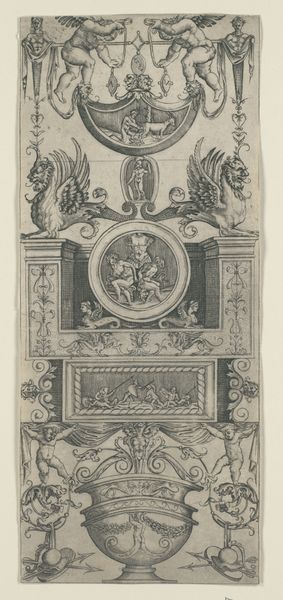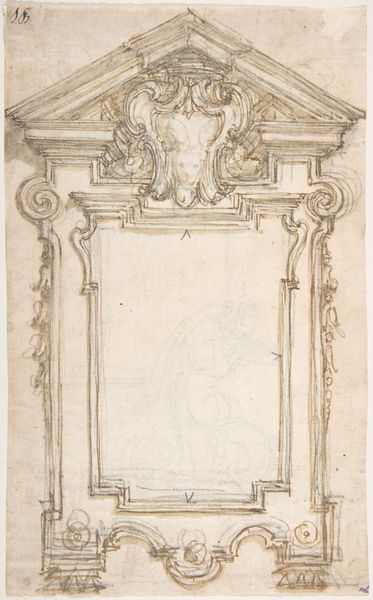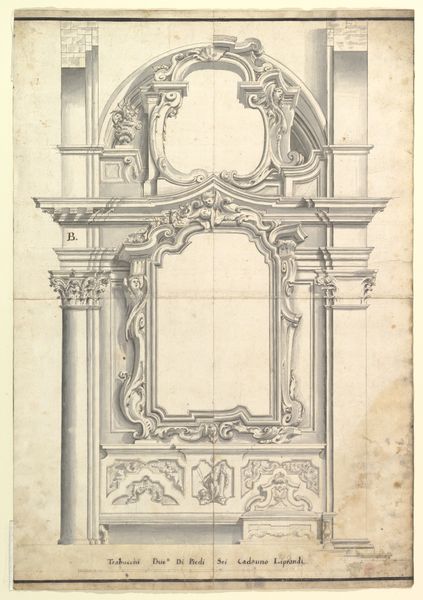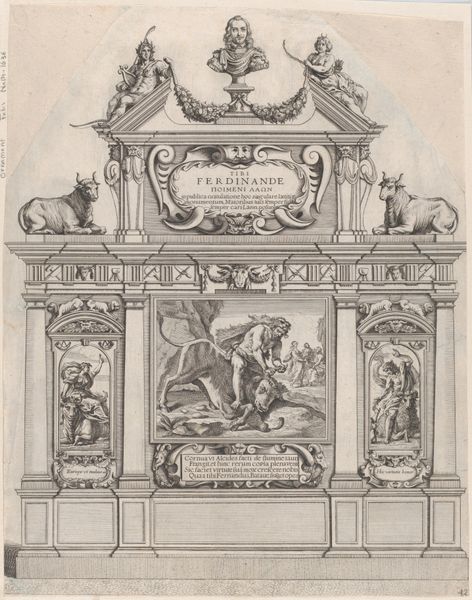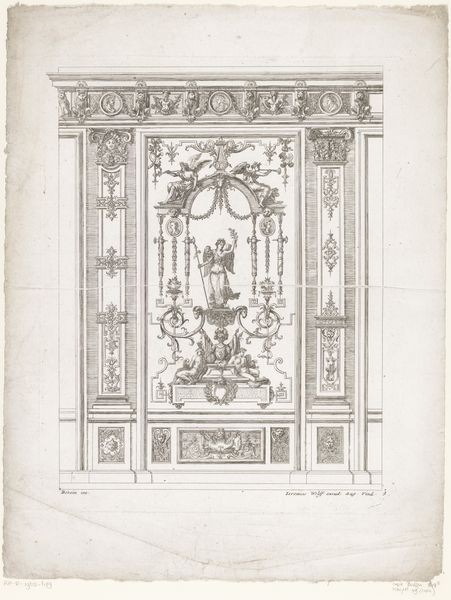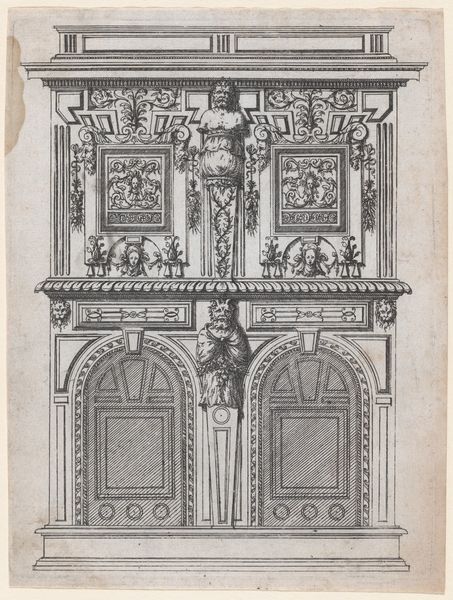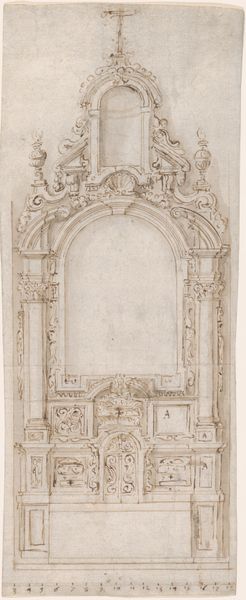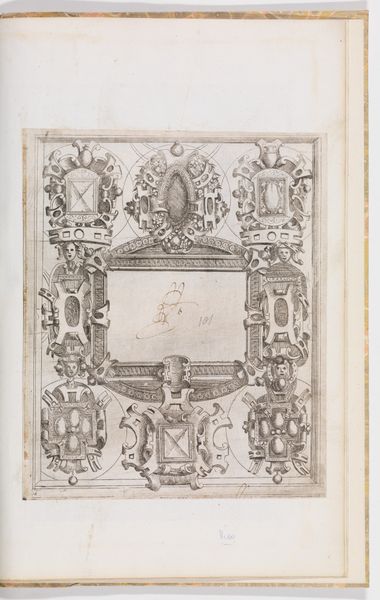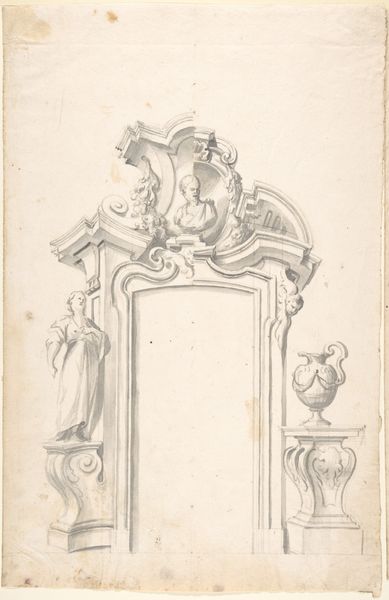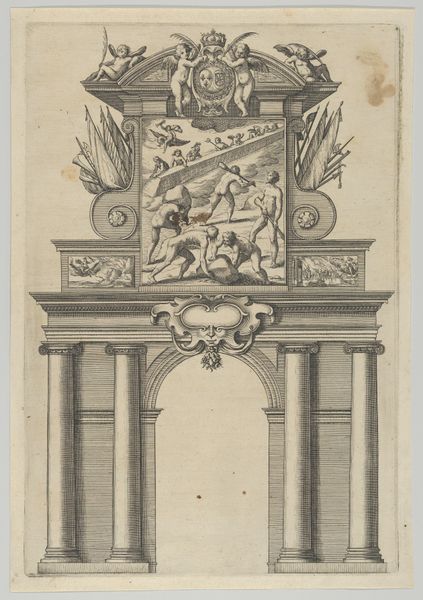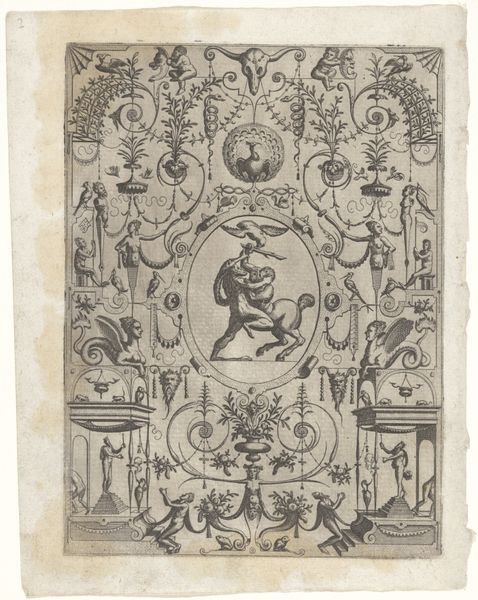
Halved Variant Designs for un Altar with the Virgin of the Immaculate Conception in the Central Cartouche 1700 - 1780
0:00
0:00
drawing, pencil, architecture
#
drawing
#
baroque
#
classical-realism
#
figuration
#
pencil
#
history-painting
#
architecture
Dimensions: 18 3/8 x 11 1/8 in. (46.6 x 28.3 cm)
Copyright: Public Domain
Editor: This drawing, "Halved Variant Designs for an Altar with the Virgin of the Immaculate Conception in the Central Cartouche," dates back to somewhere between 1700 and 1780, created by an anonymous artist. It's rendered in pencil and gives off a very grand, ornate feeling even though it's just a study. What is your take on this altar design? Curator: The very fact that this is a design, a preparatory drawing, offers insight into the function of art within Baroque society. Religious institutions often commissioned such elaborate pieces to project power and solidify their influence. It also underscores the highly controlled, almost propagandistic, role art played within the church at that time. Notice how the Virgin is placed centrally, almost staged. Does that imagery, given its context, trigger any thoughts about public image and religious art's potential political power? Editor: I guess it's easy to see it simply as religious art, but seeing the Virgin as "staged" makes me rethink it completely. It's like the church was marketing itself. Curator: Precisely. Now think about where this altar was intended to be placed. Who was supposed to view it, and what message was it intended to convey? This wasn't just about faith; it was about social control and visual rhetoric within a hierarchical society. Editor: So, the altars were tools to assert authority and guide popular opinion? It sounds devious, but pretty smart. I never considered the art having ulterior motives, I thought the art was to represent faith. Curator: Devious or smart depends on your viewpoint, doesn't it? The altar's complexity speaks to a patron who wished to flaunt both his religious fervor and worldy prestige, remember that these patrons often played a role in governing the art's composition. That raises the broader issue of artistic autonomy during this time. Did artists have the freedom to fully express themselves, or were they essentially artisans, working to predetermined ideological parameters? Editor: That's a fascinating question. It makes you see art, and this seemingly pious design in a whole new light. The Virgin becomes a visual symbol manipulated to maintain social order. Thank you, that’s so eye opening.
Comments
No comments
Be the first to comment and join the conversation on the ultimate creative platform.
